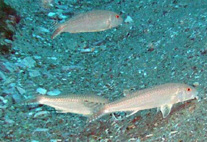Abstract
We review recent advances in the use of non-adult gordiid cyst stages to locate gordiids over large geographical regions and new culturing techniques which can help overcome current difficulties in nematomorph biodiversity studies. Using these techniques, we collected a new species of gordiid as cysts in aquatic snails (Biomphalaria pfeifferi) from the Lake Victoria Basin, western Kenya, Africa and cultured them in the laboratory. We describe the adult free-living male and female worms using morphological (light and scanning electron microscopy) and molecular data as well as the life cycle, mating and oviposition behavior, egg strings, eggs, larvae, and cysts of this new species. Chordodes kenyaensis n. sp. belongs to a large group of African Chordodes in which simple areoles are smooth or superficially structured less so than “blackberry” areoles but contain filamentous projections. Present among the simple areoles are clusters of bulging areoles, crowned and circumcluster areoles along with thorn and tubercle areoles. In the laboratory, worms developed and emerged within 53–78 days from three species of laboratory-reared crickets exposed to cysts of this species. Adult male and female C. kenyaensis n. sp. initiated typical Gordian knots within hours to days of being placed together and males deposited masses of sperm on the cloacal region of females. Females began oviposition within a week of copulating and attached egg strings in a continuous zigzag pattern on small branches or air-hoses but never free in the water column. Larvae hatched within two to three weeks, and cysts developed in laboratory-reared and exposed snails within 14–24 days. Morphological characteristics of egg strings, eggs, larvae and cysts of C. kenyaensis were most similar to other gordiids in the genus Chordodes but differed morphologically from other gordiid genera for which similar information is available.

